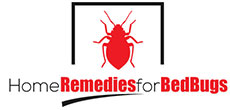Bed bug infestation can be devastatingly frustrating and stressful. Getting rid of bed bugs has been a withstanding challenge for many households through the years. True enough, just when you thought you’ve eliminated them, they still keep on coming back.
When it comes to killing bugs, the first solution that may probably pops out of mind is the use of insecticides. Through ages, people have relied on the powerful property of insecticides in getting rid of pests. However, bed bugs are not our typical insect. They are much more difficult to find and they are probably anywhere in your house, ready to attack you when you least expect it. They are even more enduring than any other bugs. Spraying insecticides is only capable of reducing their population temporarily; those remaining bed bugs can just easily reproduce a hundredfold which makes them thriving again in no time.
The only possible way we can win against bed bugs is to determine the most effective insecticides that can eradicate them for good. Several products are being advertised to guarantee total elimination of bed bugs. With thousands of these products to choose from, it is almost impossible to identify which is the best insecticide in dealing with bed bug infestation. To help you single out the best insecticide, it is always wise to check the product information and find out the compounds that made up the product.
Insecticides can be classified according to their form: liquid, aerosol and powder. Regardless of your preference, the active chemicals used in the product are what matter the most.
 Here is the list of the 6 most effective insecticides that are commonly used for bed bug control:
Here is the list of the 6 most effective insecticides that are commonly used for bed bug control:
- pyrethrins and pyrethroids
- desiccants
- biochemicals
- pyrroles
- neonicotinoids
- insect growth regulators.
These insecticides have different approaches in getting rid of bed bugs.
Pyrethrins and Pyrethroids
Pyrethrins are considered one of the safest insecticides because they are derived from a botanical source – the chrysanthemum flowers. This compound has been used to drive bed bugs out from their hiding spots and exterminate them. But through time, bed bugs have become more resistant to pyrethins. Pyrethroids, on the other hand, are synthetic compounds which are chemically-formed from pyrethins. In short, pyrethroids are pyrethins in its chemical-form. Pyrethroids are most commonly used in fogging.
Pyrethrins and pyrethroids can be used in combination with other insecticides to amplify their effects. If you think the insecticide you’re using isn’t effective anymore, try adding another compound or try switching to another insecticide.
Desiccants
Learning and understanding the anatomy of a bed bug can be the best approach in dealing with them permanently. The body of a bed bug is covered with a waxy coating that provides the hydration it needs to survive. Destroying the exoskeleton coating will dehydrate them slowly until they eventually die, leaving them no chances of survival. This approach is what makes desiccants indispensable in the fight against bed bugs. Unlike other pesticides, bed bugs cannot possibly build resistance to desiccants, resulting to a longer-lasting effect.
Examples of desiccants are:
- Diatomaceous earth: is derived from fossilized remains of aquatic phytoplankton in the form of a powder. When sprinkled on bed bugs, the powder dries out their exoskeleton which causes them to die. Diatomaceous earth can be a deadly weapon against bugs but it is entirely safe on mammals.
- Boric acid: contains sodium borate salts that can instantly dry out the waxy coating of a bed bug’s body. Aside from this property, it also takes advantage of the fact that bed bugs actually eat boric acid. It expedites the killing process by disrupting the bug’s stomach and damaging their nervous system. In general, boric acid works by killing bed bugs inside and out.
Biochemicals
The only biochemical approved by EPA for bed bug control is cold pressed neem oil. This oil is derived from pressing the seeds of a neem tree which is typically found in Africa and Southeast Asia. The oil extracted from neem seeds is found to kill bed bugs and their eggs in contact.
Pyrroles
Under this category, chlorfenapyr is the only approved compound for bed bug control. This insecticide works on the cellular level. The effectiveness of this compound depends on the biological activity of the bug’s cells to produce new chemicals that can disrupt the functions of the cells, thus resulting to bug’s death.
Neonicotinoids
Neonicotinoids are derived from nicotine and are synthetically formulated to disrupt the bug’s nervous system by agitating its nicotinic receptors. Failure of the nervous system is a guaranteed death for the bugs.
Insect growth regulators
These compounds work by interrupting the development of bed bugs into adulthood by mimicking natural growth hormones. This process can be done by either increasing or decreasing the production of hormones responsible for the development of young bed bugs.
Deciding what to use
Bed bug sprays are most common among products used against bed bugs. These products may contain insecticides in liquid or aerosol form. While they are convenient to use, active ingredients used in bed bug sprays can only take effect on contact and leaves temporary effect that only lasts for 24 hours.
Insecticides in powder form, which are also to be used in contact with the bugs, have residual effect that can last up to 12 weeks as long as they stay dry. Take note that powder loses its abrasive property when exposed to water.
Using multiple forms of insecticide may be wise if you want to ensure success in killing bed bugs permanently. Spray the areas where they might be hiding such as baseboards, nightstands, dressers, couches, carpet edges, cracks and crevices on the ceilings and walls. Wait for the liquid spray to dry then proceed sprinkling the same areas with bed bug powder.
Take extra caution when using bed bug insecticides. Some chemicals used in the product can be hazardous to your health when inhaled or ingested. Use gloves and face mask to protect your hands, nose and mouth from coming in contact with the insecticides. Make sure no children are around and immediately leave the room after.




